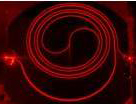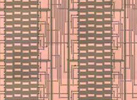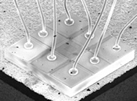| Centre for Photonic Systems Engineering Department Electrical Engineering Division |
 |
 |
 |
 |
 |
| Home | Research | People | Publications | Teaching | CDT | News | Contact |
|---|
|
CURRENT PROJECTS
PREVIOUS PROJECTS |
Tunable CPE for Access Networks: TUCAN Project Abstract: TUCAN addresses the component needs for Customer Premises Equipment (CPE) for high data rate (1 to 10Gb/s) WDM PON access networks. Current optical TDM access networks, such as GPON, operate with a single upstream wavelength and utilise low cost, fixed wavelength lasers at cost levels of less than $10 per laser. To approach these costs for WDM PONs it is essential to develop a universal CPE WDM transmitter that can be used on any network unit, regardless of the operating wavelength, i.e. it must be either 'colourless' or tunable. Tunable DBR lasers provide a solution that allows flexibility in system design and hence are a widely applicable and future proof solution. However, the cost, power consumption and wavelength control requirements of currently available products prohibit their use in access links. The project targets the development of a low cost tunable transceiver technology that will be capable of meeting access network cost targets whilst maintaining high performance and reducing power requirements. This will be achieved by targeting the main cost and power consuming elements of current products. Key elements of our strategy include transfer of the control of absolute wavelength to the network, use of monolithic integration of the optical components on to a single chip, thereby simplifying the packaging requirements, and the elimination of thermocoolers. Prototype CPE build will drive the development of the overall module to be compatible with equipment requirements for both business and residential applications and provide units for system level trials. In this way the project aims to demonstrate both the technical and economic feasibility of tunable DBR laser-based CPE as a key enabler for high bandwidth, long reach FTTH networks. Mike Wale from Oclaro Technology plc is the Project Leader. |
2020 Centre for Photonic Systems: information provided by webmaster@cps.cam.ac.uk |